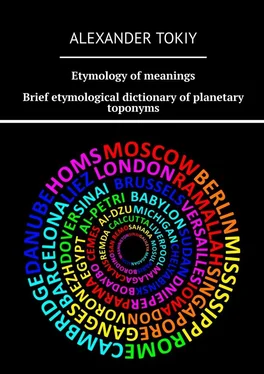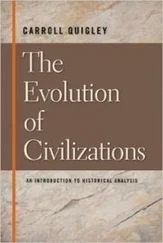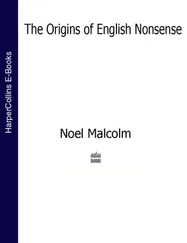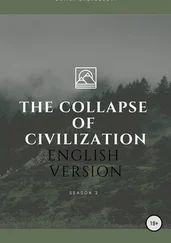In the preposition “k”, the sonorous sound “d” only strengthens this meaning. “Do” is already a more serious obstacle, restriction, “pillars of Hercules”, beyond which movement is impossible. The meaning of this preposition has been preserved to this day, although it has expanded over the course of evolution, and received different shades, but the original meaning— “limited poking”—has been preserved in it.
Many different derived combinations have appeared from the original forms of these ancient prepositions. Vowel sounds complemented the meanings. The language was filled with various “to”, “ta”, “te”, “tam”, “do”, “da”. The last “da” is particularly interesting. The sound of a poke, an obstacle, coming into contact with an open vowel “a”, completely changes – like Cinderella after the wave of a magic wand. The vowel “a” indicates that the insurmountable obstacle, as it seemed at first, is no longer an obstacle, and the dirty rags have been replaced by a ball gown.
“Da” is consent, the abolition of borders, the abolition of obstacles. You mustn’t, but you can! This protoroot was very common in the everyday life of our forefathers, having the meaning of “consent” in sexual relationships. “Da” is permission for sexual contact. Already in those early days, the meaning of “consent” became associated with the possibility of coitus, that is, access to woman’s sexual organs, and later – with the female sexual organ. This meaning of “consent” to mating and the name of the female sexual organ formed many words that have survived to our time.
Obstacles served as the beginning of the appearance of the “do” and “no” roots, becoming a common mechanism for their appearance. Still, if the “do” meant a restriction, then the protoroot “no”, as opposed to the open “na”, was perceived as an objection or denial.
You can practice word formation using the oldest roots. Let “do” be a limited” poking”, a certain limit, and “no” is an objection, a negation. Combining them, we get the word “dono”– “dno” (bottom) that has been preserved to our time. It turns out that “dno” is the absence of a limit: a person pokes a stick into the water, and the stick does not rest anywhere. There is no stop, no limit. There is no “do”—deep to it. Now this word has the opposite meaning: a certain surface, a stop under water. But in the names of rivers, this combination of ancient prepositions had original meanings. “Dono” is a property of deep rivers that could not be forded. “Dono”—no limit, no bottom, it is deep. This original meaning is preserved in the ancient word “Avaddon” (Abaddon), which basically refers to the “abyss”. There are many toponyms\place names with this “dono” on the planet: the Don (river), Caledonia, Dongola, London, and hundreds of others.
Allowing yourself to experiment, you can “play” with the vowel “a”—the sound of food. If we take the same ancient preposition “do”, and put the protoroot “na” before it, we get the word “nado” (to need\must), which spoils everyone’s mood and forces them to mobilize all their personal resources. What is “nado”? This is a kind of “sweet need”, which is in the way of satisfying the ill-fated “do” is an obstacle. As a result, “nado” became a symbol of overcoming. Given that “na” has the meaning of “something located on top”, we can interpret this word as an action “over the limit”—a very common phenomenon of Russian life, which does not choose long paths, but goes through the mountains…
About the “mountain beginning” say protoroots “ay” [aɪ] and “ya”. They are often found in the names of mountains, ridges or mountain rivers. The combination of the sounds “y” and “a” is formed when we look up. If a person raises his head at the same time when pronouncing any sounds, then the vowels – first of all, the “a” sound come out unhindered. But as soon as the trachea bends, interrupting the air, a “i” sound appears. From this movement of the head two ancient protoroots appeared: “ay” is a movement up, “ya” is a movement down. Or simply: “ay”—at the top, “ya”—from top to the bottom.
There is a beautiful example to understand how words appeared in ancient times – this is the English word “ice”, consisting of two roots: “ay” and “s”. The first signified upward movement, the second is water. Where “above” could there be water? Only in the mountains, on icy snow-capped peaks. Therefore, the word “ice”—even without translation means frozen on the tops of “mountain water”. Protoroot “ay” gave the name of the white color. Where could the ancient people see the white color? Only on the snow-capped peaks of high mountains.
Sorting out such combinations is an exciting, useful, and even unpredictable activity, as we will see more than once. The main thing is to understand that all words have their origin in deep and “common” antiquity, growing out of meaningful sounds that our forefathers exchanged.
Water is a life!
Protoroots in the ancient names of water bodies
If my first significant discovery was the mystery of the origin and main meaning of the sound “l’”, then the next key realization was the idea that language is natural, physiological and firmly woven into the environment. Ancient sounds and ancient toponyms\place names are directly related, so the names of localities are a map written in the primordial language of mankind. These are landmarks of ancient people. Names of the environment appeared long before writing and long before the formation of the languages and peoples known to us. In fact, toponyms\place names are a huge legacy of ancient times, which we own now – and not always consciously.
What have always people needed? The most basic needs are air, water, and food. A person can live without air for several minutes, without water – for several days, and not much longer without food. Therefore, all the oldest names are somehow connected with the sources of life.
However, “to know the taste of water, you need to start drinking”, draw in a handful of spring water and hear the sound “ms”—an ancient root that is easy to find in the names of water bodies. I didn’t even have to go far for examples. In the Chelyabinsk region, there are many hydrological toponyms\place names that go back to this root. First of all, the Miass River. And there is a Lake Misyash (Mises). There is also a swampy place called Mysy (Capes). A little further is Lake Karmyskaly. We found Karamys, Muslyumovo, Lake Machacul, Lake Mysty, Utemis, Lake Mushaykul and derived from this protoroot: the Meseda River, the Lemeza River, and even the Kamyshinka River. The meaning of the word “kamysh” (reed) is understood very simply: “ga” is a way, “ms” is water. So it is “the way to water”. Where does the reeds grow? Such place names scattered across the country: Kamyshly, the city of Kamyshlov, Kamysl, the city of Kamyshin and others. Who “named” the southern Urals? There is a hypothesis that the ancient Aryans migrated to India and the middle East from the Northern territories of modern Russia, and these paths lay through the South Ural lands, which still preserve the “toponymic memory” of the migration of peoples. But I think that the names were given much earlier, when this land was inhabited by very ancient tribes.
Interested to read in the map of Russia: the Mius River, the Meza River, the city of Mezen’, the Mzymsha River, the Mshaga River, the Msta River, Muzga, the Mosha River, the Moshka River, the city of Mozhga, the Masa River. And the city of Moscow, our great capital, which grew up on the banks of the river of the same name, is a toponym\place name that goes back to the protoroot “ms” and once sounded like “Moskov” or “Moskova”. One thing led to another. Several times I rested on the Black Sea coast in the city of Anapa and the city of Gelendzhik, and there, too, I saw some rivers which names are formed by this protoroot. The largest river flows in Novorossiysk – the Tsemes River. In Gelendzhik the main river is the Mezub́ River. There is a river with a funny name near Anapa – the Mozhepsin River. The river is small, so you can understand the meaning of our ancestors laid in the name. It is easy to guess how the name of the Shumay River appeared – literally: “water from the mountains”. And flowing far away from the village Raevskaya the Maskaga River is already a classic of “world” title. The same classic is the name of the Myskhako River, which flows on the Black Sea coast.
Читать дальше












